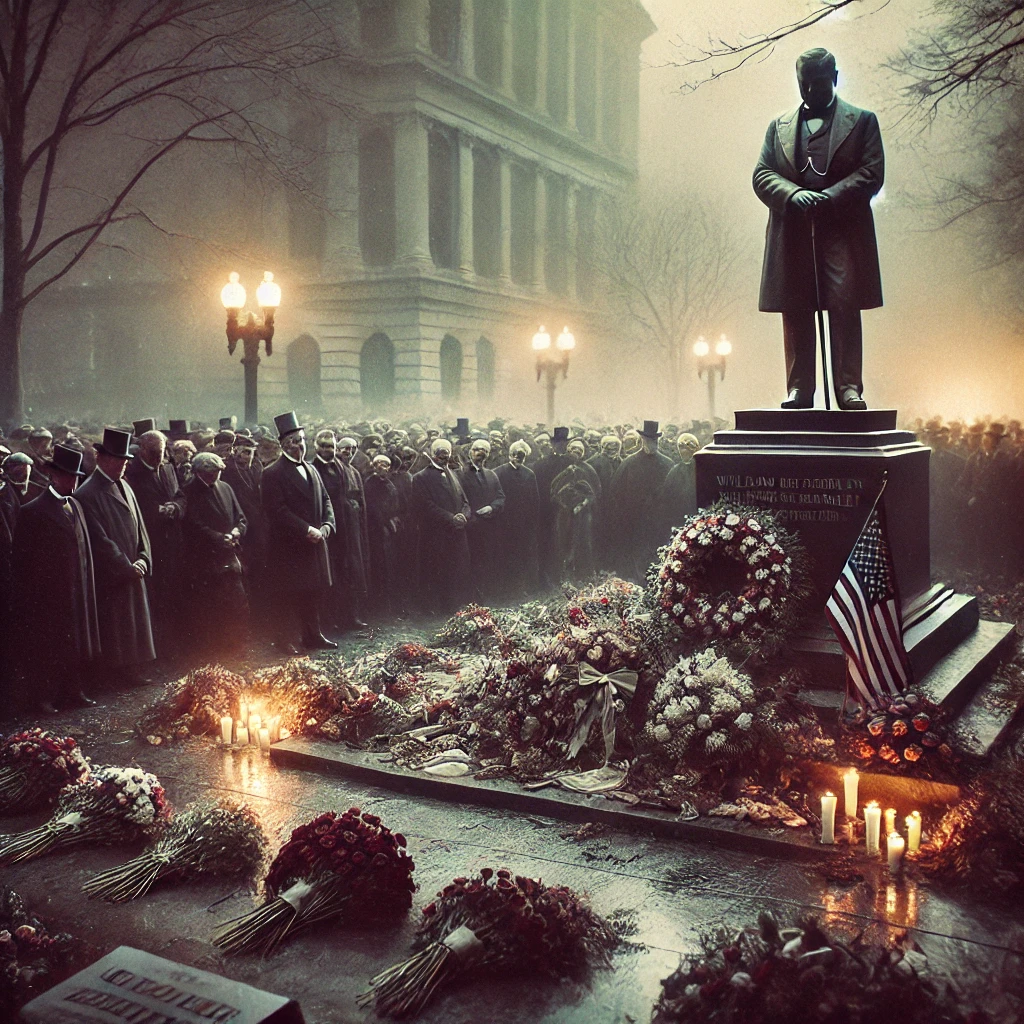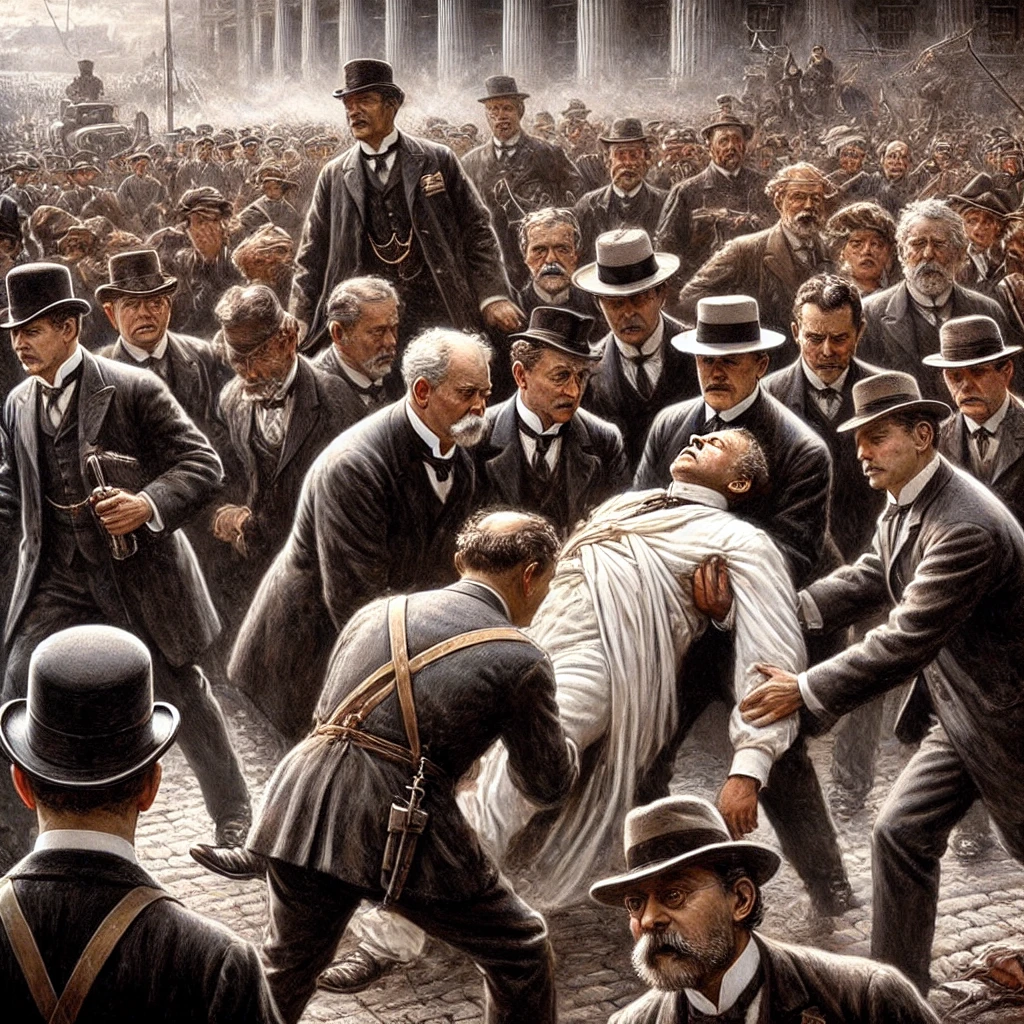On September 6th, 1901, the 25th president of the United States, William McKinley, was shot at the Pan-American Exposition in Buffalo, New York. The exposition, a grand event showcasing the achievements and technological advancements of the Western Hemisphere, was intended to celebrate unity and progress. However, it became the site of a tragic event that would alter the course of American history.
As President McKinley greeted visitors at the exposition’s Temple of Music, an unsuspecting crowd watched in awe. Among them was Leon Czolgosz, a 28-year-old factory worker harboring radical anarchist beliefs. Concealing a revolver wrapped in a handkerchief, Czolgosz approached McKinley and fired two shots at close range, one of which critically wounded the president. The immediate chaos that ensued marked the beginning of a national tragedy.

The Aftermath: McKinley’s Struggle and the Nation’s Grief
Following the assassination attempt, McKinley was rushed to a nearby hospital where doctors worked tirelessly to save his life. Despite the medical care available at the time, they were unable to remove the bullet or prevent the infection that would ultimately lead to his death. On September 14th, 1901, eight days after the shooting, President McKinley succumbed to his injuries.
The nation was plunged into mourning. William McKinley had been a beloved leader, admired for his steady hand during the Spanish-American War and his economic policies that promoted growth and stability. His death not only shocked the country but also highlighted the dangers of political extremism in a rapidly changing society. Public outrage grew, and the assassination led to a crackdown on anarchists and radical political groups, with new laws being enacted to prevent similar tragedies.

Leon Czolgosz: The Assassin and His Motives
Leon Czolgosz, the man responsible for McKinley’s assassination, was quickly apprehended and confessed to his crime. Czolgosz had been influenced by anarchist ideologies, particularly the speeches of figures like Emma Goldman, who advocated for the overthrow of capitalist systems and the government. However, Czolgosz acted alone, driven by his personal frustrations and disillusionment with society.
In a swift and highly publicized trial, Czolgosz was convicted of murder and sentenced to death. He was executed in the electric chair on October 29th, 1901. His actions, while intended to strike a blow against the government, instead led to widespread fear and suspicion of anarchism and other radical movements. The perception of anarchism as a dangerous and subversive ideology was solidified in the American consciousness.

The Legacy of McKinley’s Assassination
The assassination of President McKinley had far-reaching consequences for the United States. It marked the end of an era and the beginning of a new chapter in American politics. With McKinley’s death, Vice President Theodore Roosevelt was sworn in as the 26th president of the United States. Roosevelt’s presidency ushered in a period of progressive reforms and an expansion of the country’s role on the global stage, addressing many of the social and economic issues that had contributed to the climate of unrest.
The tragic events at the Pan-American Exposition also led to significant changes in presidential security. The Secret Service, which had previously been focused on combating counterfeiting, was given the responsibility of protecting the president, a role it continues to play today.
While the legacy of William McKinley is often overshadowed by the manner of his death, his contributions to the nation were substantial. His leadership during a time of war and economic transformation helped shape the future of the United States. The assassination of McKinley serves as a poignant reminder of the impact that one individual can have on the course of a nation and the importance of safeguarding democratic institutions against the threats posed by extremism.
